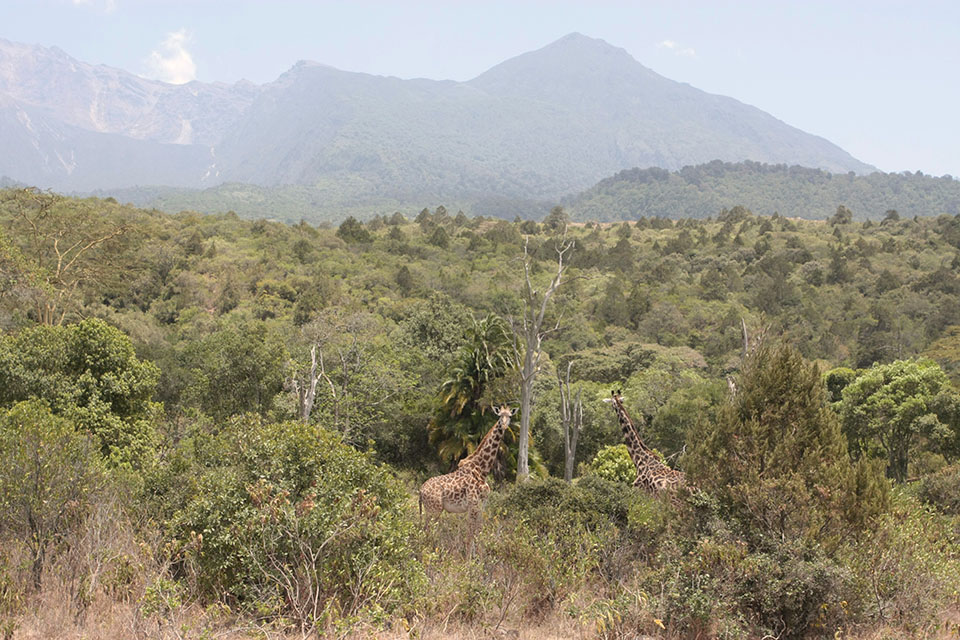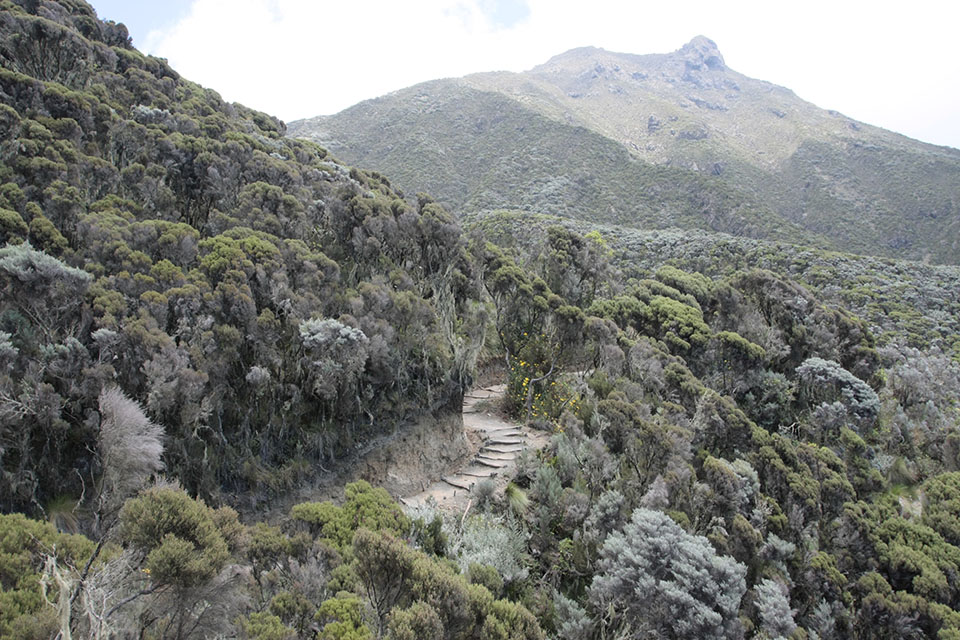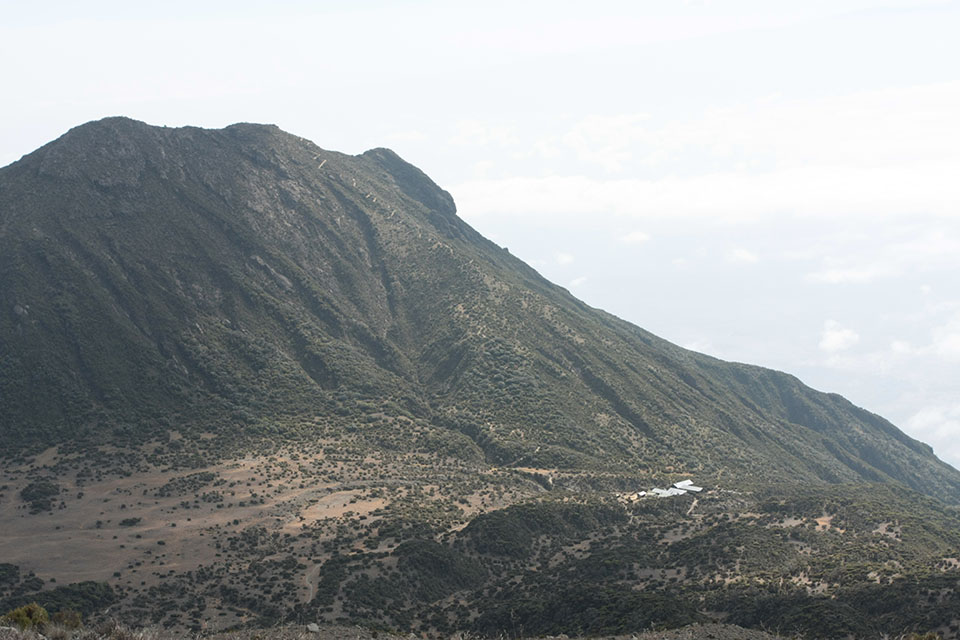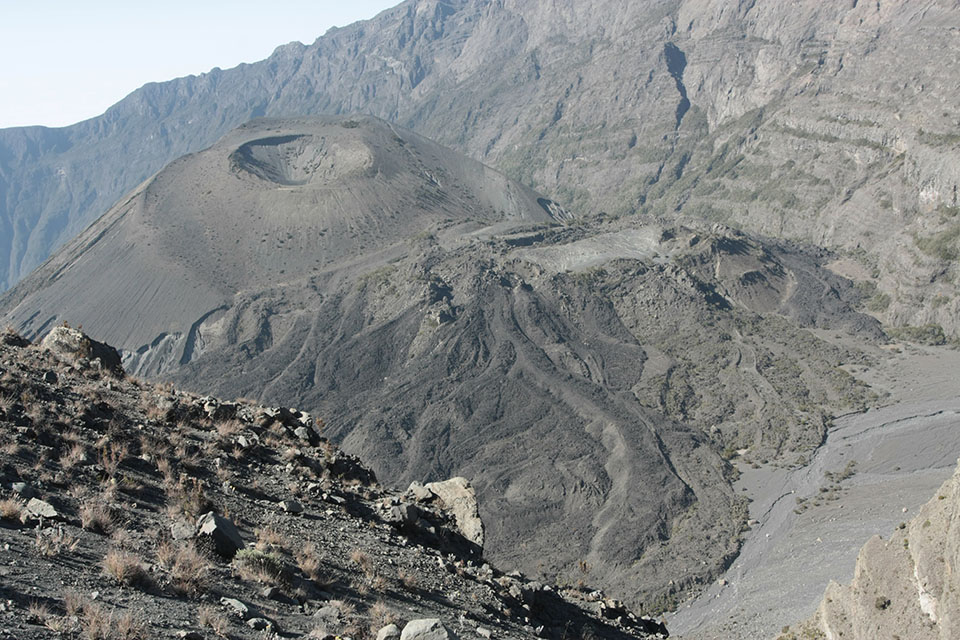Overview
Mount Meru Climb is the best for acclimatization prior to Mount Kilimanjaro climbing; The Mountain is the third highest peak in Africa and is the second highest mountain in Tanzania at 4,568m.
The mountain is located within Arusha National Park, Tanzania’s gem. This prime location gives trekkers the chance to spot some of the wildlife that inhabits the area. The ascent is quite steep, the route to the summit passes over streams, through parkland, montane forest, a giant heather zone and moorland. The summit is reached by a narrow, barren ridge, which provides stunning views of the Ash Cone lying several thousand feet below in the crater.
We highly recommend our clients to take 4 Days Climbing Mount Meru as you will have an extra day to acclimatize before a final day to push to the summit.
Itinerary
Today’s Stats
Hiking Time: 4-5 hours
Total Distance: 8 km
Starting Altitude: 2956m (9698ft)
Final Altitude: 3978m (13054ft)
Environment: Lower heather zone
Trekkers arrange their own accommodation and we meet in Arusha after breakfast. We drive to Momella Gate where we complete registration formalities and a national park ranger is assigned to accompany our group.
Setting off from Momella Gate, we take the southern route known for its abundant wildlife. The track passes through open grassland where there is the possibility of spotting buffalo grazing in one of the clearings. The fortunate few may see giraffe and elephants.
The forest section is especially scenic with strangler figs, wild mango, African olive and wild elder. Birdlife is abundant with common sightings of Hartlaub’s turaco, olive pigeon, white fronted bee eaters, fiscal shrike, stone chat, variable sunbirds and the tropical boubou. Trekkers with a keen eye will spot several species of butterflies such as the blue swallow-tail, soldier commodore, mocker swallow-tail, golden winged forester, emperor and forest mother of pearl.
We cross the Ngare Nanyuki river just above the Maio Waterfalls climbing steadily through lush montane forest until we reach the “Fig Tree” (famous for the roadway passing through it) where we enjoy our well-deserved lunch.
After lunch, the canopy begins to thin and we encounter many forms of bird life and hear the grunting calls of the magnificent black colobus monkeys with their long ‘cape’ of white hair and a flowing white tail.
Around 2300m the higher montane forest begins and is home to juniper and podo trees while beautiful wild flowers such as the empetient species, red-hot poker, orchids, fire ball lily and gladiolus adorn the trail.
By mid-afternoon the path clears and we encounter the first close views of the towering cliffs of Mt Meru and the stunning ash cone. Miriakampa Hut, situated in idyllic grassy glade, is reached in time to enjoy the afternoon sun and beautiful views over the surrounding plains towards Kilimanjaro.
From here we can go on an evening game walk in hopes of watching some wildlife at one of the watering holes in the crater.
Today’s Stats
Hiking Time: 2-3 hours
Hiking Distance: 4 km
Starting Altitude: 2516m
Final Altitude: 3570m
Environment: Heath
The track from Miriakampa Hut to the saddle below Little Meru is a steep sustained trek that tests your legs. Our track takes us through beautiful and lush montane forest and striking tree species such as hygenium abyssinica, nuxia congesta, podocarpus, and hypericum tevolutum with mosses and lichens adorning the ground and trees.
Passing the halfway point of Mgongo wa Tembo (Elephant Back Ridge) we pass through giant heather and moorland vegetation, home to common shrubs such as erica arbores, stoebe kilimandscharica and leonits nepatifolia.
Around midday we reach the alpine zone of Saddle Hut where we rest, set up our bunks and enjoy a picnic lunch.
In the afternoon, trekkers feeling energetic can make the short climb to the nearby summit of Little Meru (3820 m/ 12,533 ft) for superb views of Socialist Peak and the steep winding trail that awaits us the next morning. The round trip ascent of Little Meru takes 1-1.5 hours.
At these higher altitudes we encounter magnificent birdlife including the bearded vulture soaring high above us, white- naked raven, lammerger, stonechat, alpine swift and cliff chat found around camp.
Today’s Stats
Hiking Time: 4-5 hours ascent + 6-8 hours descent
Hiking Distance: 5 km ascent + 15 km descent
Starting Altitude: 2516m
Summit: 4566m
Final Altitude: 2516m
Environment: Alpine Desert
At around 3am we rise, put on all our warm clothes and enjoy a hot cup of tea or chocolate before setting out
on the trail. The first hour is a steep climb to Rhino Point (3800m/12,467ft), and then the path continues along a narrow but spectacular ridge of ash and rock to reach Cobra Point (4350m/14,272ft).
The summit is now within our reach and after an hour of climbing and light scrambling over rocks and boulder we look up to see the summit flag beckoning us on-wards and upwards.
Arriving at the summit we are greeted with stunning views of the crater rim, the spectacular ash cone rising from the crater floor, Kilimanjaro floating on the morning clouds just 70km away, and the Rift Valley in the distance.
After soaking up the magnificent vistas and celebrating our summit success we begin our descent where we may encounter the delicately-hoofed klipspringers bounding from rock to rock in the early morning light. The route back to Rhino Point in the sharp morning light traverses a narrow ridge between the sloping outer wall of the crater and the sheer cliffs of the inner wall is one of the most dramatic and exhilarating walks in Africa.
Arriving at Saddle Hut mid-morning, we enjoy a sumptuous brunch before retracing our steps to Miriakamba Hut for Lunch, diner and overnight.
Today’s Stats
Hiking Time: 2-3 hrs. trekking
Starting Altitude: 2516m
Final Altitude:1500m
Environment: Moorland, Parkland
After a leisurely morning, we complete our 2-3 hour descent taking the direct route through open grassland and mixed forest, with good chances of seeing wildlife. The northern trail has excellent views back towards the crater, Momella Lakes and over the plains of the national park.
By late morning we reach Momella Gate and receive our summit certificates, say farewell to our crew and have time for a short picnic lunch before returning to your previous hotels for some well-deserved shower and fresh clothes.
The Trip Cost Includes
- National Park entrance, hut and rescue fees
- Professional wilderness first responder trained guide and porters carrying a max 20kgs
- Expedition medical kit
- Porters and Guides
- Rescue fees
- Food
- Purified Water
- Comprehensive vital sign monitoring
- Personal Summit Certificate signed by the National Park for successful trekkers
The Trip Cost Excludes
- International airfare
- Excess baggage charges
- Costs of visas
- Immunizations
- Personal expenses such as beverages (other than those included with meals, as listed in each itinerary)
- Room service
- Souvenirs
- Laundry
- Communication charges
- Medical or extra evacuation fees
- Staff gratuities
- Personal trekking equipment
- Additional transportation
- Meals incurred by a client unable to continue a planned itinerary due to illness ,Medical conditions or due to airline schedule changes
- Accommodations before and after the climb
- Airport transfers
Group sizes vary between 2 and 10, with climbers coming from all over the world. Please however take note that it is compulsory for climbers to be accompanied by a park ranger and on some days it may happen that one ranger is responsible for more than one group. As a result thereof, you might find yourself hiking alongside guests from other groups.
According to the national park authorities, children under the age of 10 years are only allowed to hike until Miriakamba Hut (2500 m) whereas children between 10 and 16 years are permitted to go until Saddle Hut (3550 m). Children above the age of 16 years are allowed to continue until the summit. Please note that children of all ages have to be accompanied by one of their parents at all times. Although there is no maximum age restriction, a medical check-up is advisable for climbers above the age of 60.
You do not have to be an athlete or extreme alpinist but you should be in good shape. The ascent is physically less demanding than the one for Kilimanjaro but on the other hand, it is technically more challenging due to a few unsecured climbing passages.
- The warmest time with the least rainfall is between December and February, followed by the main rainy season from March until the beginning of June. Between June and October, temperatures are moderate with almost no rainfall. November is regarded as the small rainy season and daily short rainfalls with cloudy views are common.
- The best time to travel is between the end of June and the middle of October and although it is possible to climb Mount Meru in the main rainy season, we strongly discourage anyone from doing so.
You will pass through many different vegetation zones. The dry forest of the lower region changes to a dense mountain rain-forest, which then turns into scrub-land. Closer to the summit, vegetation consists of heather and moorland later becoming barren alpine desert.
You will overnight in basic mountain huts.
Simple ablution facilities are available at the first hut (running cold water but no showers) but from the second hut on-wards there will only be very basic long drops (simple latrines). Hikers will however be provided with a bowl of warm water for their daily wash.
- Meals are included as mentioned in the itinerary.
- For breakfast there will be a choice of fruit, scrambled eggs, porridge, toast, jam, hot chocolate, coffee or tea. Lunch will be provided in form of a lunch box containing sandwiches, boiled eggs, chicken etc.
- For dinner you will enjoy soup and bread followed by meat or poultry along with starch (i.e. chips, mashed potatoes, pasta or rice) as well as vegetables.
- While breakfast and dinner are served in a communal dining hut, lunch is enjoyed en-route.
- Please let us know if you have any special dietary requirements or food allergies and we will do our outmost to cater for them (only possible with advanced notification).
Almost everybody tackling Mount Meru will be affected by the thinner air and the altitude in some or other way. Top athletes are just as much at risk of suffering from it as people who are out of shape. Headaches, extreme fatigue, loss of appetite and nausea are all signs of possible mountain sickness. Symptoms are mostly mild, enabling you to continue your hike and only in a very few instances are symptoms more acute, making an immediate descend unavoidable. Severe altitude sickness is a serious matter and you should bear in mind that it can be life threatening and at worst lead to death. It is also important to replace lost body fluids due to physical activity by drinking enough water. We suggest two to four litres per day along with magnesium to prevent muscle cramps.
- Mountain rescue services in Tanzania can in no sense be compared to the ones found in the European Alps for example. If you find yourself unable to walk, you will either be carried or transported on a wheeled stretcher. As this is by all means a very unpleasant experience, it is important that you only push yourself as far as your body allows. Helicopters are hardly ever deployed as they can only land at a lower altitude.
- Please also make sure your health insurance covers you while travelling. If you are not adequately covered, we urge you to take out suitable travel insurance assuring all your medical expenses including rescue and repatriation costs are covered.
- Yes you should bring some extra money for tips, souvenirs and other personal expenses.
- If you are bringing USD, please make sure the bills have been be printed after 2004 as any earlier printed ones will not be accepted.
Tips for the mountain crew are common practice. Gratuities are a large portion of the crew’s income and thus highly appreciated. Below are some recommendations from our side (per group, not per person):
Ranger: 10-20 USD per group
Guide: 15-18 USD per day
Assistant Guide: 12-15 USD per day
Cook: 8-10 USD per day
Waiter: 7-9 USD per day
Water Porter: 7-8 USD per day
Porter: 6-7 USD per day
- There are a few things you should pack for a Mount Meru climb and as the list is quite extensive, you will receive a detailed packing list from us once you have confirmed the booking.
- For your convenience we also rent out all essential clothing items and other gear.
Our trekkers’ vital signs, oxygen saturation’s, general health and well-being are monitored, recorded and assessed each day.
- Officially, no vaccinations are required by the Tanzanian health department. However, Tanzania is a yellow fever region and thus we advise that you get yourself vaccinated for this.
- In general we also recommend that you have all other shots such as Tetanus, Diphtheria, Polio and Hepatitis A & B up to date.
- Malaria is present in Tanzania but there are no mosquitoes at high altitude. It is your own choice if you wish to take any precautionary medication, but we suggest that you consult your doctor or travel clinic in this matter.
- For most travellers it is possible to obtain a visa upon arrival but nevertheless, it is every visitor’s obligation to check the latest visa regulations with their respective embassies.
- Every traveller is responsible to be in the possession of the required travel documents.
| Number of Travelers in Group Discount | Cost Per Traveler in US($) |
|---|---|
| 1 Person | 1,400 |
| 2 People | 1,250 |
| 3 People | 1,230 |
| 4 People | 1,200 |
| 5 People | 1,150 |
| 6 People | 1,120 |
| 7 People | 1,100 |
| 8 People | 1,080 |
| 9 People | 1,070 |
| 10 People and above | 1,065 |



























